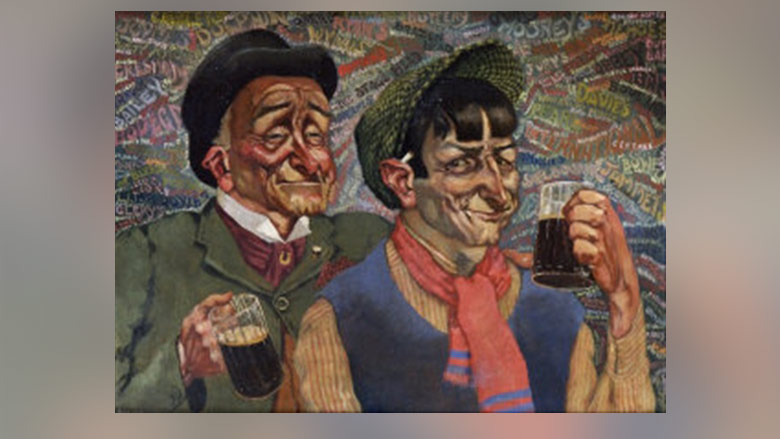Like it or not, Mr. Spock is part of popular culture the world over. Spock is one of the rare characters who both outlived his creators and whose popularity grew over time. Dreamed by the great Gene Roddenberry for “The Cage” back in the mid-1960s and brought to life by the late Leonard Nimoy, Spock is the smooth and logical operator that many humans wish they could be.
The way Spock came to life is interesting — both in canon and on the sound stage. Spock, according to Star Trek lore, was the first Vulcan to Starfleet. These early days of Spock’s life had not been explored until the release of J.J. Abrams’ “Star Trek” film in 2009. As he was a child of both Earth and Vulcan, Spock never seemed completely happy among either Vulcans or human beings.
Spock’s First Look Was Devilish
According to Hollywood legend, Spock was initially supposed to be red-skinned and much more alien-looking. Thanks to authors Ed Gross and Mark A. Altman and their book, “The Fifty-Year Mission: The Complete, Uncensored, Unauthorized Oral History of Star Trek: The First 25 Years,” we have a pretty good idea of what this original Spock might have been:
“He was a red-tailed devil who didn’t eat,” Samuel A. Peeples told Altman and Gross in the book. Peeples wrote the classic TOS episode, “Where No Man Has Gone Before.”
“[Spock] absorbed energy through a red plate in his stomach,” Peeples said. “This is the way he was laid out in the original concept.”
Since the red made Nimoy’s skin look utterly black on the TV screen, there was a slight flirtation with making Spock green. But this too didn’t last.
The Network Made a Big Fuss Over the Ears
Makeup master Fred Phillips teaching my son Adam to give a Spock haircut. LLAP pic.twitter.com/MCm0V2ftM9
— Leonard Nimoy (@TheRealNimoy) June 4, 2014
NBC was still nervous about Spock’s pointed ears, and they famously altered the points in all print sales brochures promoting “Star Trek.” Herb Solow, one of the television executives responsible for getting Trek on TV in the first place, remembered how Spock’s popularity eventually beat back NBC’s fears about the character.
“The first four episodes to air featured Mr. Spock in varying degrees,” Solow told StarTrek.com in a 2016 interview. “But by the time the fifth show was ready to air, ‘Spockmania’ had erupted, and NBC’s anti-Spock campaign came to a grinding halt. Desilu’s mailroom was bulging with huge sacks of fan mail, most of which was addressed to Mr. Spock.”
His ears, always a focus of so much attention, were crafted by Fred Phillips, the makeup “maestro” for “The Original Series.” Phillips and his assistant, Charles Schram, developed a mold that would allow for easier replication. They were painful to remove, though, and Associate producer Bob Justman told Nimoy that it might be easier for a plastic surgeon for alteration.
“I said, ‘Leonard, I think I’ve come up with the answer to the ear problem,” Justman recalled in the book, “The Making of Star Trek.”
“You’re going to be able to save all that time in makeup,” Justman jokingly told Nimoy. “No more being uncomfortable, no more pain, no more problems. You can just get regular makeup, and everything will be perfect.’ And he says, ‘Yeah, what is it, Bob?’ And I said, ‘We’re going to send you to a plastic surgeon, and we’re going to point your ears. When the series is finished, we’ll pay to have them put back to normal!”
This original look was toned down a bit, and we have what is still basically used today on Ethan Peck, who will portray Spock on the upcoming “Star Trek: Strange New Worlds.”
Could Spock’s Ears be Inspired by a Painting In Ireland?
But there is another story from Ireland, which paints a different picture of how Spock’s look was developed. The legend is that one of the designers (which must have been Fred Phillips or Charles Schram) visited a pub called O’Brien’s on Leeson Street where he saw an exciting painting.
This painting (as seen below) was created by Harry Kernoff and is entitled “A Bird Never Flew On One Wing.” According to the Irish Independent, the story is that Phillips, Schram, or perhaps even Roddenberry himself saw the man on the right (whose name was Toucher Doyle) and decided at that moment that Mr. Spock ought to have pointed ears.

Harry Kernoff“A bird never flew on one wing”
Spock Also Based on a Police Chief
Spock’s attitude changed from the interested, and almost jolly space elf on “The Cage” to the stoic and nearly emotionless being fans knew in the Trek films. What might not be widely known is that Roddenberry based Spock on a friend and colleague he worked with after World War II.
As a police officer, Roddenberry admired Los Angeles Police Department Chief William H. Parker, who he told the Los Angeles Times, was a “right-wing autocrat, but there was another side to him.” Parker and Roddenberry often spoke on many philosophical subjects, and young Gene admired how Parker’s views changed over time.
“The future creator of ‘Star Trek’ was particularly impressed with Parker’s openness to new ideas and his diverse intellectual interests,” wrote the Times. “Many years later, these became characteristics of Spock and his Vulcan philosophy of ‘infinite diversity in infinite combinations.’”
READ NEXT: How One of the Worst ‘Star Trek’ Films Became Its Most Significant


No comments:
Post a Comment